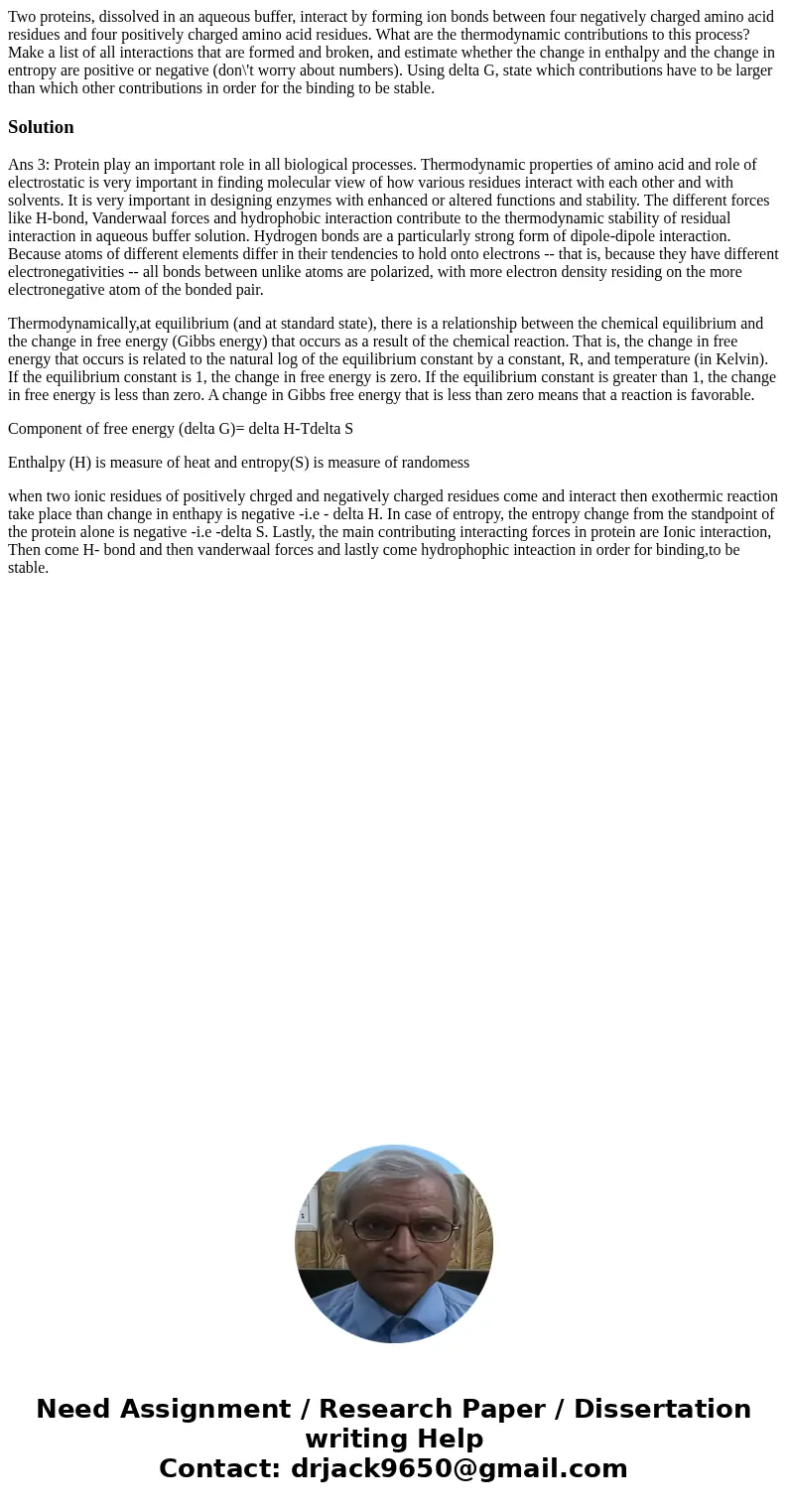Two proteins dissolved in an aqueous buffer interact by form
Solution
Ans 3: Protein play an important role in all biological processes. Thermodynamic properties of amino acid and role of electrostatic is very important in finding molecular view of how various residues interact with each other and with solvents. It is very important in designing enzymes with enhanced or altered functions and stability. The different forces like H-bond, Vanderwaal forces and hydrophobic interaction contribute to the thermodynamic stability of residual interaction in aqueous buffer solution. Hydrogen bonds are a particularly strong form of dipole-dipole interaction. Because atoms of different elements differ in their tendencies to hold onto electrons -- that is, because they have different electronegativities -- all bonds between unlike atoms are polarized, with more electron density residing on the more electronegative atom of the bonded pair.
Thermodynamically,at equilibrium (and at standard state), there is a relationship between the chemical equilibrium and the change in free energy (Gibbs energy) that occurs as a result of the chemical reaction. That is, the change in free energy that occurs is related to the natural log of the equilibrium constant by a constant, R, and temperature (in Kelvin). If the equilibrium constant is 1, the change in free energy is zero. If the equilibrium constant is greater than 1, the change in free energy is less than zero. A change in Gibbs free energy that is less than zero means that a reaction is favorable.
Component of free energy (delta G)= delta H-Tdelta S
Enthalpy (H) is measure of heat and entropy(S) is measure of randomess
when two ionic residues of positively chrged and negatively charged residues come and interact then exothermic reaction take place than change in enthapy is negative -i.e - delta H. In case of entropy, the entropy change from the standpoint of the protein alone is negative -i.e -delta S. Lastly, the main contributing interacting forces in protein are Ionic interaction, Then come H- bond and then vanderwaal forces and lastly come hydrophophic inteaction in order for binding,to be stable.

 Homework Sourse
Homework Sourse